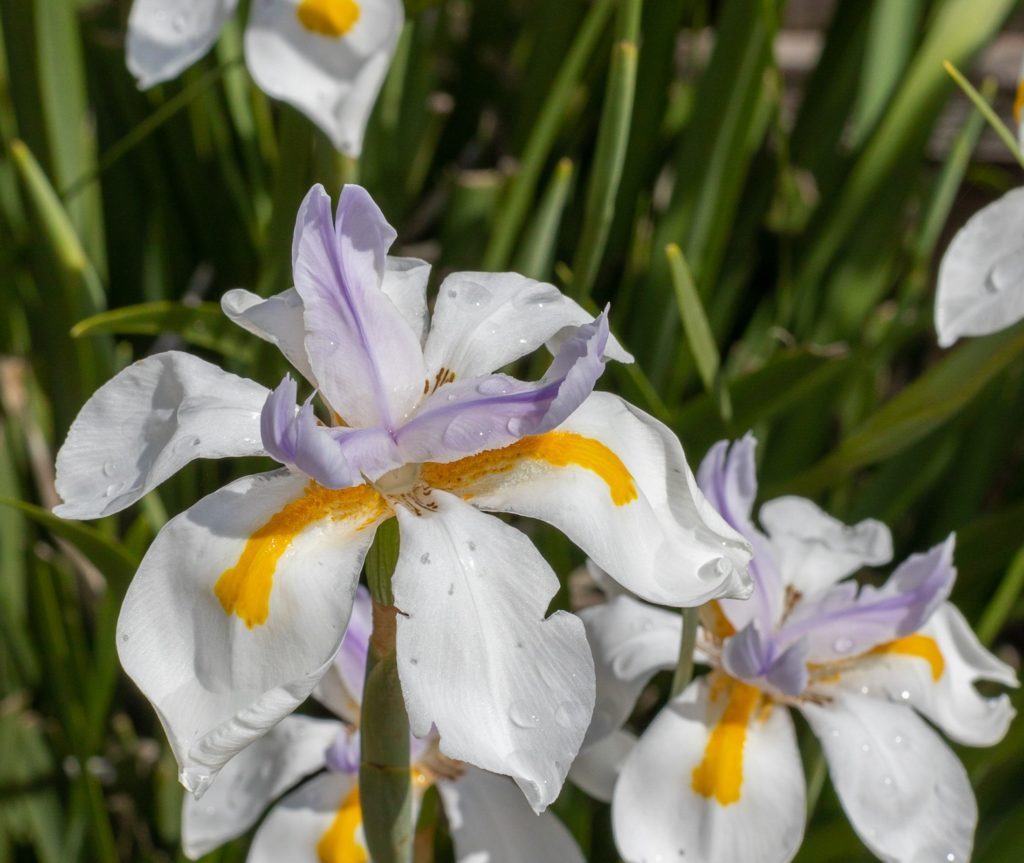
African iris blooms give a pop to the landscape all season long. This plant flowers spring through fall. Its delicate white flowers unfurl atop rigid stalks. African irises are perfect plants to place in borders, in front of foundation plants, and along the entrance to the home. These Florida favorites are hardy in zones 8 and above. These easy to care for plants will naturalize easily so they can be divide after the second or third year. To divide, dig up the rhizomes then cut the clump in half with a sharp tool. Plant each of the halves separately or give one away!
Plant African iris in part sun or dappled shade and well-drained soil. They will also do well if exposed to direct morning sun or late evening sun. Fertilize the plants three times a year starting in the spring then once in the summer and then again in the late fall. Amend the soil with some peat and topsoil if needed to give these beauties a good start. Trim off the spent stalks and clean out the bottom of the plant of any dead leaves that might accumulate there.
Note: These plants are grown for decorative purposes and are not intended for human or animal consumption
FAST FACTS
Outstanding Features: Continual bloomer thought the summer, easy-care

Common Name
African Iris, Butterfly Iris

Bloom Colors
White with yellow and purple markings

Water
Water every other day until established then as needed. Do not soak

Zone
8 and above

Fertilizer
Feed during the growing season with a fertilizer for blooming plants

Scientific Name
Dietes vegata

Light
Part sun, part shade

Size
2-3 feet tall and about as wide

Overwintering
In zones 7 and lower, use as a container plant or as an annual in the landscape

Companion Plants
Foxtail fern, thryallis, variegated ginger